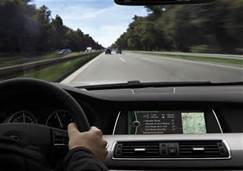7 Habits of Safe Drivers
 |
CINCINNATI--March 19, 2014: According to Orbitz’s annual Spring Break Travel Survey, warm weather locations scored nine out of 10 spots on the “top destinations” list this year. From Las Vegas to New Orleans to Orlando, students and families across the country will soon be escaping the “polar vortex” to warmer climates. To help keep safety top of mind for those traveling by car, Cintas Corporation today identified seven habits of safe drivers.
“By making safe driving habits a routine, you can help protect yourself, the passengers in your car and others on the road as you make your way to and from your spring break destination.”
“When we learn to drive, we’re taught certain things we can do to stay safe on the road, but many of these things are never reinforced later in life,” said Dan Braun, Senior Vice President of Value Improvement Initiatives, Cintas Corporation. “Cintas has one of the largest fleet of commercial trucks in operation in the U.S., so safe driving is extremely important to our business. Therefore, we’d like to share safe driving habits that we promote within Cintas and suggest you keep in mind when you travel this Spring break season.”
Cintas’ top habits of safe drivers include:
Maintain a clear distance. The rule of thumb is to allow for approximately three seconds between your car and the car in front of you. Once the car passes a fixed object, you should slowly count to three and if you pass the object before completing the count, slow down. Follow the signs. Speed limits are posted to help protect other drivers. Driving too fast can cause an accident just as easily as driving too slowly. Safe drivers follow the posted limit – not 10 or 15 miles per hour above the posted limit. Keep your eyes on the road. Everyone knows better than to text and drive, but the same rules apply for looking at anything that can divert your attention from the road, such as the radio, a GPS system or screaming children in the back of the car. Keep your eyes on the road and allow other passengers to assist with other items requiring your attention. Check blind spots. While new cars will alert you if another car is approaching in your blind spot, you should always double check it before switching lanes. Cars that are speeding or switching over from other lanes can instantly change the availability of another lane, so regularly use your mirrors and check your blind spots before changing lanes. Stay in the appropriate lane. A good rule of thumb is to stay in the middle lane unless you’re driving slowly or have a compromised vehicle (e.g., driving with a spare tire). You should only use the left hand lane when passing. By passing on the right or going too slowly in the far left lane, you can impede the flow of traffic and cause congestion – or worse, an accident. Don’t follow a schedule. While everyone wants to get to their Spring break destination as quickly as possible, driving according to a schedule can result in unnecessary stress and increase the chance for speeding. If you get caught in traffic, don’t try to “make up the time” by going fast for the last leg of the trip. Any time gained is not worth the risk of injury to yourself, anyone traveling with you or other drivers on the road. Stay alert. Traveling long distances can wear on a driver, particularly on monotonous stretches of freeway. Stay alert by regularly switching driving responsibilities with other drivers, drinking plenty of liquids and making stops to stretch your legs.
“Spring break is a time for fun and relaxation,” added Braun. “By making safe driving habits a routine, you can help protect yourself, the passengers in your car and others on the road as you make your way to and from your spring break destination.”


